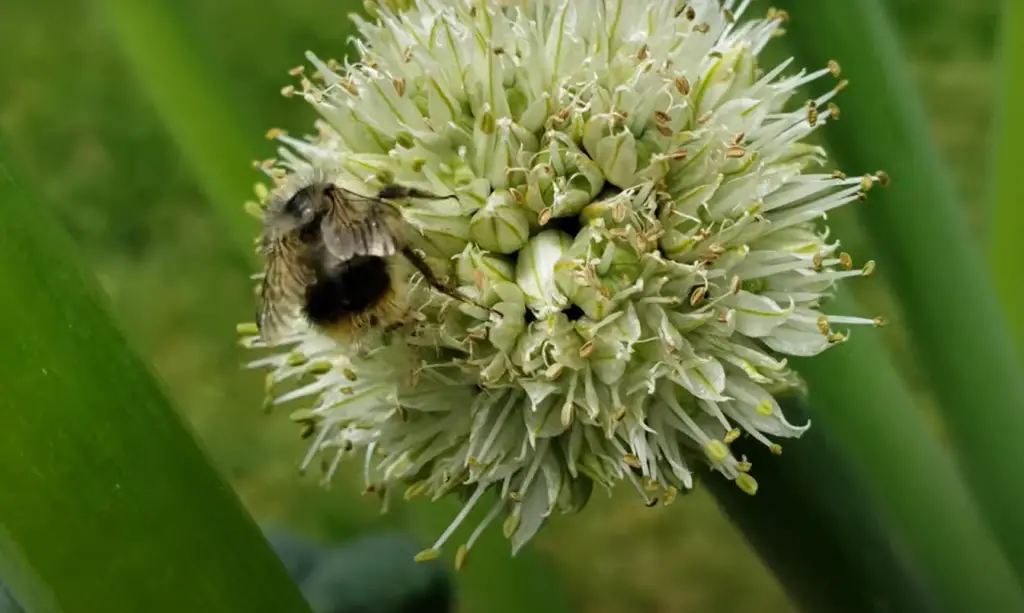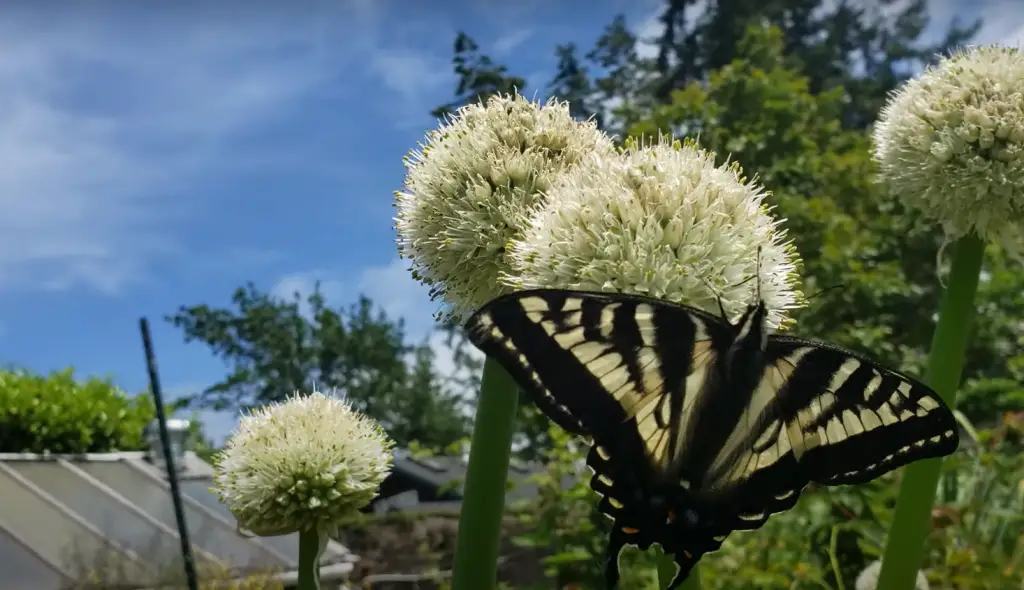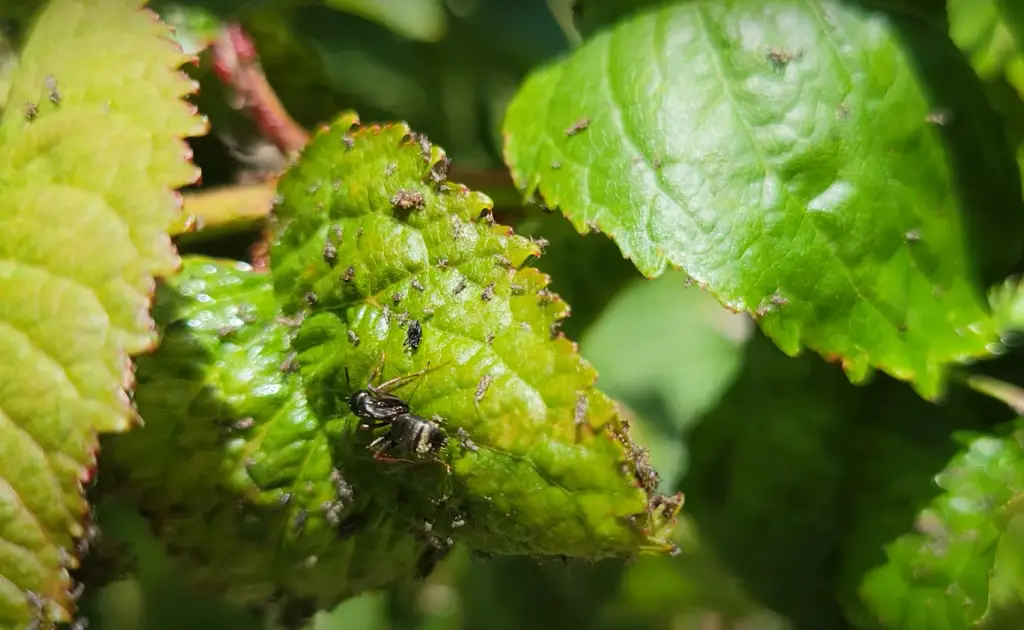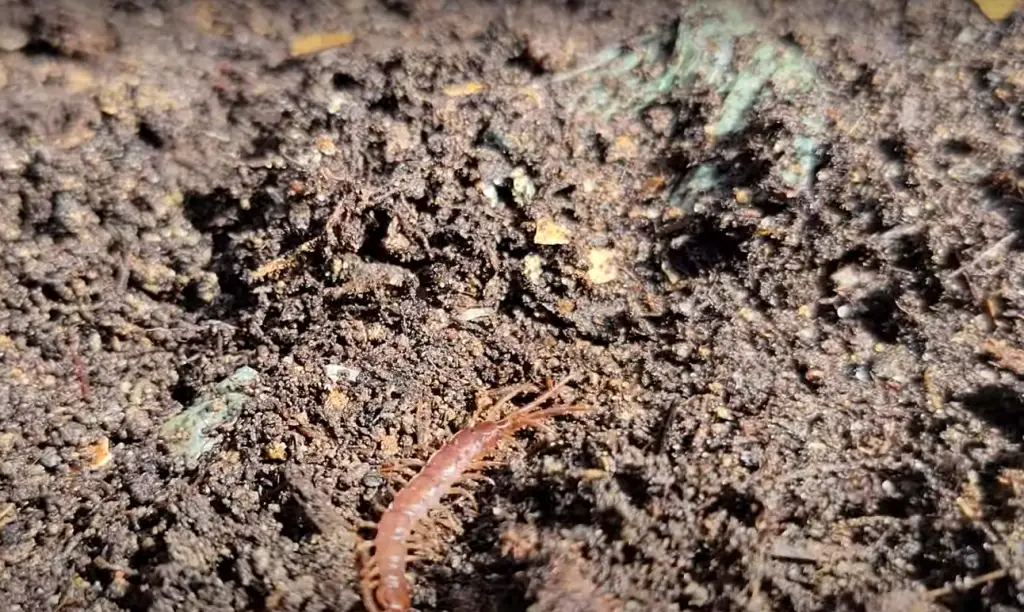Centipedes might seem like unwelcome visitors in your garden, but did you know that they can actually be beneficial? Not only do centipedes eat a variety of unwanted pests such as spider mites and beetle larvae, they also help to aerate the soil and recycle organic material. In this blog post, we will take an in-depth look at centipede behavior, habitats and the ways in which these creatures contribute to gardens around the world. We’ll also provide useful tips on optimizing their impact within your space without sacrificing other insects or parts of your flourishing ecosystem. Keep reading if you want to learn more about whether or not having centipedes running around is a good thing!
What are Centipedes?
Did you know that centipedes aren’t actually insects? They belong to the class Chilopoda and can be found all over the world. [1]

While some people may be frightened by these multi-legged creatures, they can actually be quite helpful in the garden. So if you spot a centipede in your garden, don’t be too quick to squash it – it might just be helping to keep your plants healthy!
Habitat
Centipedes are creatures that can be found everywhere. Their habitats can be diverse, ranging from damp and dark crevices to desert environments. However, there are a few key characteristics that all centipede habitats tend to share. Centipedes are nocturnal creatures, which means that they are most active at night.[2] They are also highly skilled at hiding, and they can squeeze into tight spaces to avoid detection. Additionally, centipedes need moisture to survive, so they are often found in humid environments like forests and grasslands. Overall, the habitat of a centipede can vary widely, but they all share the ability to adapt and thrive in a wide range of conditions.
Appearance
Centipedes can range from a few millimeters in length to over 30 centimeters, depending on the species. They have long segmented bodies with one pair of legs per segment and antennae at the front.
Centipedes also have a pair of venomous pincers that they use to inject their prey with paralyzing toxins.[3]Growth
Centipedes have a relatively short lifespan. The majority of centipede species live for only one to two years, though some can live up to five years. Depending on the species, centipedes will either lay eggs or give birth to live young. Generally speaking, centipedes reach their adult size within three months of hatching.
Movement
Centipedes have a unique way of moving. Their long bodies and many legs enable them to cover great distances in relatively short amounts of time. They move quickly and can often be seen running across the ground or climbing walls. Centipede movement is also aided by their multiple legs, which help them to navigate uneven terrain with ease.
Usual Traits
Centipedes are solitary creatures that do not form social bonds with other centipedes. They tend to be aggressive and territorial, so they will fiercely defend their territory and hunt any invading insects.

Centipedes are also very sensitive to vibrations, using them to locate prey in the dark. Finally, centipedes have a voracious appetite and will eat anything they can catch, from spiders to worms. [4]
Capturing Prey
Centipedes use their long legs and powerful pincers to capture prey. They quickly lunge forward and grasp their target with their pincers, injecting them with venomous toxins that paralyze the victim. Once paralyzed, the centipede will then drag its meal back to a safe place where it can feed without interruption.
Centipede Species
There are several different species of centipedes, each with its own unique traits. The most common species found in gardens are the House Centipede (Scutigera coleoptrata), the Giant Desert Centipede (Scolopendra heros), and the Common Garden Centipede (Lithobius forficatus).
The House Centipede is a small yellowish-brown creature that measures 1 to 1.5 inches long. This species prefers moist environments such as basements, bathrooms, and kitchens, where it feeds on other insects like spiders and cockroaches.
The Giant Desert Centipede is one of the largest centipedes in North America, measuring up to 8 inches long. This species lives in arid desert and mesquite environments, where it preys on small mammals, reptiles, birds, and even other centipedes.
Finally, the Common Garden Centipede is a small brownish-red creature that measures less than 1 inch in length. This species prefers damp soil or leaf litter and feeds mainly on earthworms and beetle larvae. It also helps to aerate the soil by burrowing through it with its many legs. [5]
Centipedes in the Garden
The garden is one of the top habitats where you can spot a centipede. They seem to prefer this environment, so you may have a better chance of seeing them in the garden.
Why do I Have Centipedes in my Garden?
If you’ve been noticing centipedes in your garden recently, you may be wondering why they’re there. These elongated, many-legged creatures are a common sight in outdoor environments, but having an overpopulation of them can be concerning. Typically, centipedes thrive in warm and damp environments, which means they may be attracted to areas with high moisture levels.

It’s possible that a leaky pipe or water source could be drawing them to your garden. Additionally, if you have an abundance of decaying organic matter, such as leaves or mulch, this could also be a source of attraction for centipedes. While centipedes are not harmful to humans, they do feed on other insects which can be beneficial for your garden’s ecosystem. However, if you’re experiencing an infestation, it may be necessary to remove some of these potential attractants to keep the centipede population under control.
Benefits
Centipedes are beneficial creatures to have in the garden. There are several ways in which the presence of these creatures can help make a garden more hospitable.
Helpful Predators
Centipedes are a predatory creature and an incredibly useful tool for the avid gardener.
Spiders, ants, and other small insects all stumbled upon one shared unsuspected enemy: the dreaded centipede. Therefore, this fascinating creature plays a protecting role overseeing your precious garden’s ecosystem.Organic Gardener
Centipedes are also known for their ability to aerate and till the soil and decompose organic matter. They help to break down decaying plant matter, protozoa, and fungi which in turn helps nutrients to be recycled. This process helps to keep garden soil loose and fertile, which is beneficial for plants and crops.
Negatives
While centipedes can be beneficial to gardens, they can also become a nuisance and even cause harm.
Toxic Companions
Centipedes have sharp claws that can sting or bite if handled carelessly. Some centipede species are quite venomous and their bites can be painful and cause reactions in humans such as swelling, redness, itching, burning and numbness. Therefore, it is important to exercise caution when dealing with these pests.
Indiscriminate Killers
Centipedes also tend to feed indiscriminately and can turn their sharp claws on beneficial insects, such as ladybugs, that are essential for maintaining a healthy garden ecosystem. Therefore, it is important to keep an eye out for centipedes in the garden and take steps to discourage their presence if necessary.
What do Centipedes Eat in the Garden?
Centipedes in the garden typically feed on small insects such as ants, spiders, silverfish, and beetle larvae. They also sometimes feed on earthworms and other soil-dwelling organisms. In addition to these prey items, some species of centipedes have been observed scavenging carrion or dead animals for food. Centipedes are not picky eaters and will consume anything that is small enough for them to capture.
How to Control Garden Centipedes?
Centipedes can be controlled by removing their food sources such as decaying organic matter and other insects. Removing debris from the garden, maintaining proper watering habits, and keeping plants healthy can also help to discourage centipedes. Additionally, chemical pesticides may be used, although there are some natural alternatives such as diatomaceous earth which causes dehydration in most arthropods including centipedes.

Finally, homeowners should take caution when handling centipedes as they possess sharp claws that can cause stings or bites if handled carelessly.
How to Get Rid of Them?
If centipedes become a nuisance in the garden, there are several methods of removal: naturally and with chemical pesticides.
Naturally
This way involves using natural methods to remove the centipedes.
- Remove debris from the garden such as rocks, wood piles, and leaf litter. These areas provide prime hiding spots for centipedes and other insects.
- Maintain proper drainage in the garden to avoid moisture buildup which is attractive to centipedes and their prey.
- Keep plants healthy by providing adequate water, fertilization, mulching, and pruning of overgrown vegetation.
- Plants that are well taken care of are less likely to be appealing to pests like centipedes.
- Use natural predator control methods such as releasing beneficial insects into the garden or introducing ground-dwelling predators such as lizards or frogs to help keep centipede populations under control.
- Diatomaceous earth (DE) is an effective natural insecticide that can be used to eliminate centipedes. DE works by causing dehydration in arthropods and should be applied to the areas frequented by centipedes. [6]
Using Chemicals
Using chemical pesticides may also be used to get rid of centipedes, although it is not recommended as they can also harm beneficial insects.
- Chemical sprays – Chemical sprays such as pyrethrin or permethrin can be used to kill centipedes and other pests.
- Baits -Centipede baits containing insect growth regulators (IGRs) can be used to effectively control large populations of centipedes in the garden.
- Insecticides- Insecticides such as bifenthrin and cyfluthrin can be used to kill centipedes and other pests.
- Dusts- Centipede dusts are also available, but should be used with caution to avoid harming beneficial insects in the garden.
By following these steps and using the appropriate control measures, it is possible to keep centipedes out of the garden and protect your plants from these pests.
Are Centipedes in the Garden Likely to Enter the House?
For anyone with a garden, the question of whether centipedes will make their way into the house is a serious concern. These multi-legged creatures can be seen scurrying through the soil, searching for prey. While they may play an important role in controlling other pests in the garden, their presence indoors is less desirable. Centipedes are attracted to damp areas such as bathrooms and basements, and can easily slip through small cracks and crevices.[7]
Prevention is key when it comes to keeping them out, and sealing up any potential entry points is a good place to start. With vigilance, it is possible to keep these little pests at bay and enjoy the beauty of a garden without the risk of unwanted guests in the home.
How To Get Rid Of Centipedes In The House?
If you have noticed an influx of centipedes in your home, there are a few steps you can take to reduce their presence.
- Reduce Moisture – Centipedes need moisture to survive so the first step should be to reduce the amount of moisture present in your home. This includes checking for any leaky pipes or wet areas that could be attracting them.
- Identify and Seal Entry Points – Check around all windows, doors and other potential entryways for gaps or cracks where centipedes could enter. Once these points are identified, seal them up with caulk or weatherstripping to prevent further invasion.
- Get Rid of Other Pests – Centipedes feed on other insects such as spiders, silverfish and beetles so it is important to eradicate these other pests from your home.
- Use Traps – Setting up traps around the perimeter of your home can help to catch any centipedes that may have made their way into the house. Just be sure to check the traps regularly and release any caught centipedes outdoors.
- Apply Insecticides – If all else fails, insecticides can be used to kill off any remaining centipedes in the house. However, this should only be done as a last resort since insecticides are toxic and could harm other beneficial insects in your home environment.

FAQ
Should I Put Centipedes in My Garden?
It is not recommended to intentionally put centipedes in gardens as they can become a nuisance and even cause harm. However, if the conditions are right, such as plenty of decaying organic matter for them to feed on, then centipedes may end up in the garden naturally. If this occurs then it’s best to take steps to discourage their presence, such as removing debris and maintaining proper watering habits.
Are Centipedes in the Garden Friends or Foe?
In general, centipedes in the garden are beneficial as they feed on other insects and help to aerate and till the soil. However, some species of centipedes can bite or sting if handled carelessly and they may also feed indiscriminately on beneficial insects such as ladybugs which are essential for maintaining a healthy garden ecosystem. Therefore, it is important to exercise caution when dealing with centipedes.
Should I Get Rid of Centipedes?
Centipedes can help keep other pests away, but if there are too many they can be a nuisance. To get rid of them, you can use natural repellents or insecticides. Be careful when handling centipedes – some have venom that can be painful if it bites you. To prevent more centipedes from coming, remove any debris and make sure to water your plants properly.
Do Centipedes Eat Earthworms?
Yes, some species of centipedes will eat earthworms. Most centipedes are carnivorous and feed mainly on other insects such as spiders, moths, beetles, grubs, caterpillars, ants, and flies.
Can Centipedes Kill Plants?
No, centipedes are not known to harm plants. They may feed on other insects that can damage plants, such as aphids or root maggots, but they do not directly cause any damage to the plant itself.
Are Garden Centipedes Scared of You?
No, garden centipedes are not scared of humans. They may be startled if disturbed, but they generally do not view humans as a threat. These creatures are more likely to flee if they feel threatened or if they sense vibrations that indicate danger.
Can Centipedes See You?
Centipedes have poor vision and usually rely on their sense of touch to detect prey or predators. They may be able to see movement, but they are not able to make out details. Therefore, it is unlikely that centipedes can see you.
Can You Touch a Centipede?
It is not recommended to touch centipedes as some species can bite or sting if handled carelessly. If you must handle a centipede, make sure to wear gloves and exercise caution. Additionally, some people are allergic to the venom of certain centipedes and could experience adverse reactions in response to their bites. Therefore, it is best to avoid contact with centipedes whenever possible.
Can You Feel a Centipede Crawl on You?
Yes, you can feel a centipede crawl on you. Centipedes have legs that move quickly and are very sensitive to vibrations in the environment. If a centipede is crawling on you, you may feel a tickling or tingling sensation as it moves across your skin.
What if a Centipede Bites You?
If you are bitten by a centipede, it is important to seek medical attention immediately as some species of centipedes possess venom that can be painful and cause serious reactions. Additionally, if possible, try to identify the centipede in order to determine the type of venom it possesses so you can receive proper treatment from your doctor.
Useful Video: Centipedes Friend Or Foe? – Garden Quickie Episode 78
Conclusions
While centipedes may not be the most aesthetically pleasing creature to have around a garden, their presence is important. They are an integral part of the garden ecosystem and can help maintain balance in nature. Centipedes eat a variety of pests that could otherwise do damage to plants and quickly reproduce, meaning they can help keep pests from outgrowing their populations. They also contribute to soil aeration and fertilization by breaking down organic matter. All in all, centipedes should be seen as allies rather than enemies when it comes to maintaining a healthy garden!
References:
- https://en.wikipedia.org/wiki/Centipede
- https://meadowia.com/centipedes-at-night-what-they-do/
- https://extensionentomology.tamu.edu/publications/centipedesmillipedes/#:~:text=Centipedes%20do%20have%20the%20first,of%20centipedes%20may%20cause%20discomfort.
- http://www.countrysideinfo.co.uk/forest1/folder01/html/index3.htm
- https://a-z-animals.com/blog/black-and-yellow-centipede-what-kind-is-it/
- https://www.insider.com/guides/home/diatomaceous-earth#:~:text=Diatomaceous%20earth%20works%20as%20an,out%20and%20can%20kill%20them.
- https://www.pestworld.org/pest-guide/occasional-invaders/centipedes/#:~:text=Centipedes%20are%20found%20in%20areas,crawlspaces%2C%20bathrooms%20or%20potted%20plants.










Leave a Reply
View Comments